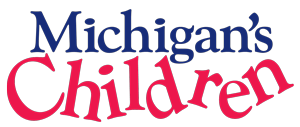Moving Toward the Top
August 20, 2015 – Trying to get better at things is good, particularly trying to get better at things that are in the best interest of children, youth and families in our state. New leadership in the Department of Education has come with new opportunities to get better, and Superintendent Whiston has already shown that he is committed to setting goals and working with others to achieve them. In a state where we ranked 37th of the 50 states in education in the last National Kids Count Data Book, this is essential. The Superintendent and the State Board of Education are spending some time over the next couple of months getting feedback about what it would really take to move Michigan to a top 10 education state.
Michigan’s Children is weighing in on that conversation with what we’ve talked about consistently for years – a focus on shrinking achievement gaps by investing in what works for children, youth and families, and their schools and communities. Six specific areas rise to the top, each with a myriad of strategies that can and must be forwarded:
Take responsibility for early strategies beyond pre-school by increasing parent coaching and supports through voluntary home visiting options, building state investment and maximizing federal investment in Early On and continuing to improve our child care subsidy system.
Support parents’ role in their children’s literacy by expanding initial efforts to help parents in their role of first and best teachers and to help them reach their own educational and career goals by better investments in Adult Education, workforce supports, and family literacy options so that parents can fully support their children’s literacy journeys.
Change school practice related to student and family trauma by providing school personnel the tools they need to recognize and deal with symptoms of trauma in their students and families and evaluating their ability to do so. It also includes building better connections with community partners who can assist.
Close equity gaps by integrating services and expanding learning opportunities. This includes building assurance that state and federal resources for service integration would go to the best models of service and that supporting services needed by children, youth and families would be available throughout the state. It also includes investing in after-school and summer learning at the state level, in addition to maintaining federal investment.
Give young people multiple chances to succeed by promoting attendance through adjustments in school discipline policies and investment in programs beyond the traditional, arbitrary four-years of high school. The effectiveness of these programs is increased when young people themselves are involved in planning and are clearly connected to a pathway leading toward college or career.
And finally, we suggested that the Superintendent and the State Board provide real leadership in this difficult work that often requires the efforts of many areas of expertise and many sectors of work, including the family and community resources. With so many things impacting a child’s ability to succeed in school and life – many of which are not within the walls of a school and the purview of education pedagogy – it is essential to bring efforts together.
As we’ve said many times before, our educational leaders have their work cut out for them, and as public and private partners available to help, we have our work cut out for us as well.
– Michele Corey
